
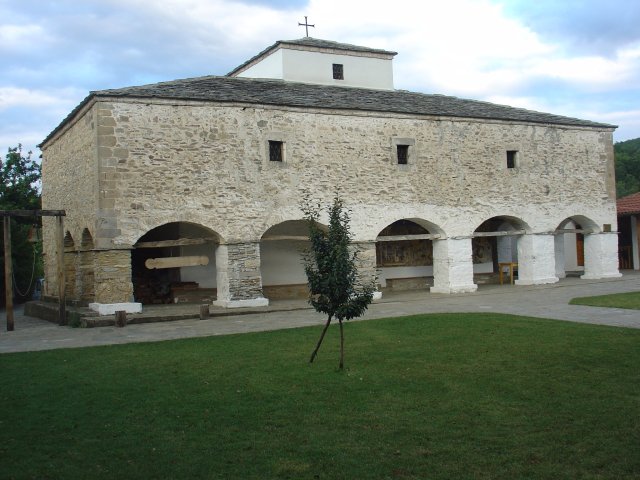



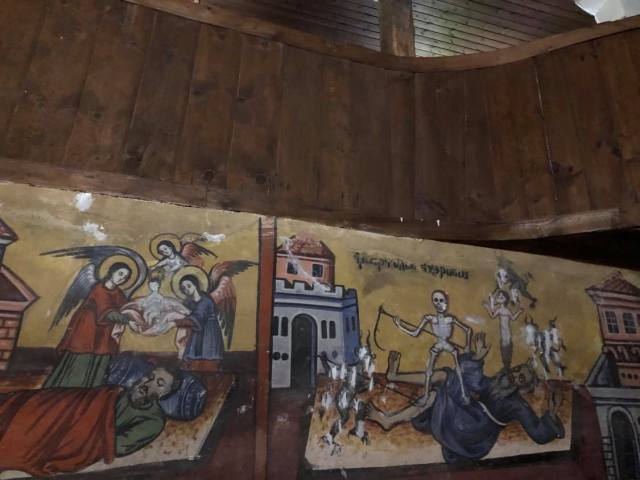
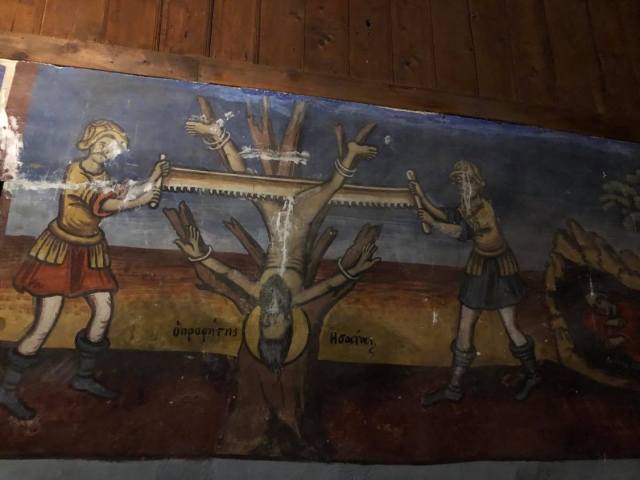
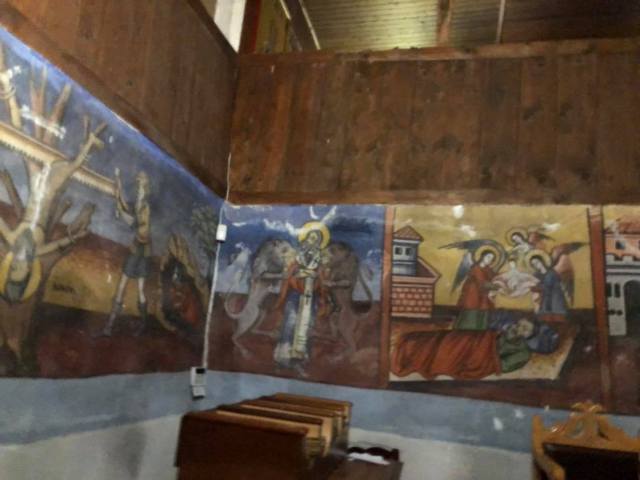


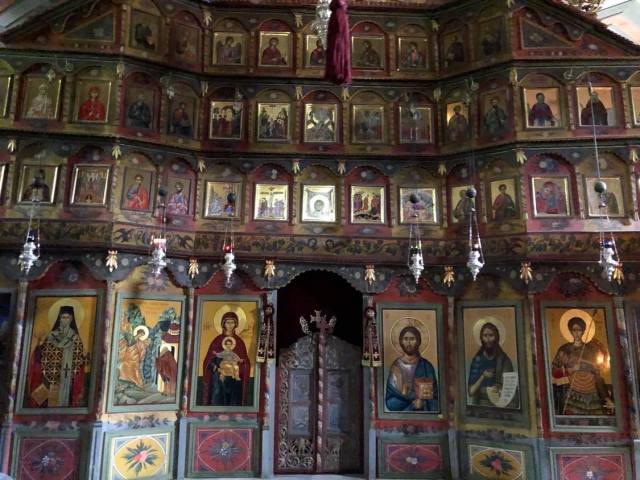
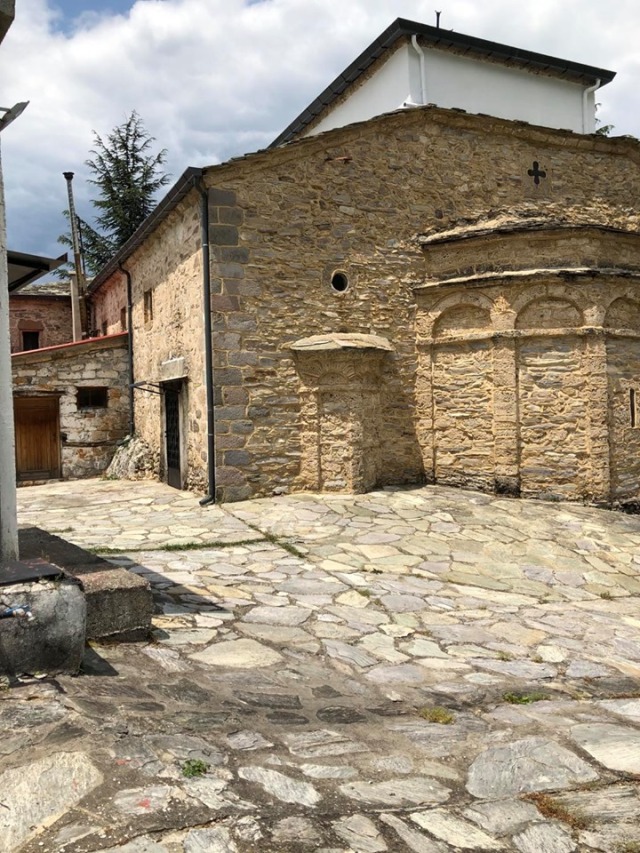
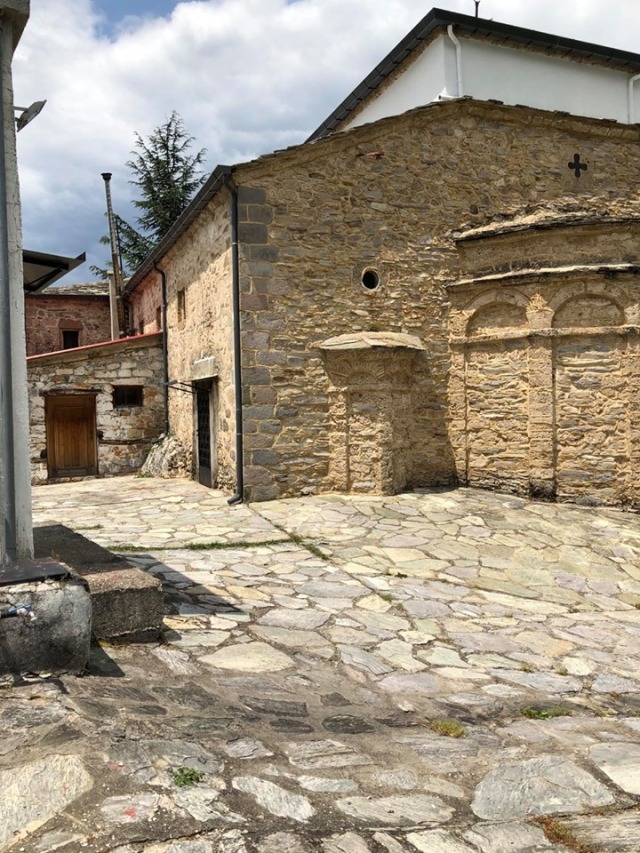

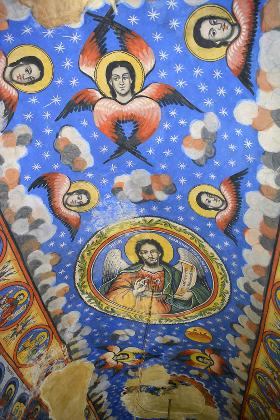
The monastery of Archangel Michael is a precious and invaluable adornment of the whole region.
Its rich and long history, its national and religious offer, its imposing bearing and the frescoes of the interior of the temple, distinguished by the unique sweetness in the faces, as well as realism in its movement, its revival and its upward course tends to highlight it in one of the largest pilgrimages of Northern Greece, as its surrounded by rich flora and fauna.
Tradition wants the Monastery to be built on an ancient sanctuary dedicated to the Artemis hunting goddess due to the rich flora and fauna of the area.
Today it is proved, by documents that are saved in the Holy Monastery of the Greatest Lavra of Mount Athos, and by elements of the previous century, that it was dedicated to Saint John the Baptist. From various documents, such as the “Chrysoboulos Logos” of Alexios Komnenos, published in 1082, it seems to have existed since the 11th century as a glebe land of the Greatest Lavra of Athos.
Regardless of the above, it remains a fact, that one and a half centuries after the restoration of the Monastery, it is dedicated and has its protector and guide Archangel Michael. In fact, in 1858, the monastery was rebuilt with a charter of the Sultan, and was renamed this way, because the monastery was burned on September 6th, the day of the Miracle of Archangel Michael at Chonae, and as a sign of gratitude by many residents of the area, who survived harmless on the day of destruction by certain death. In 3/1182, the monastery of Greatest Lavra, founded a glebe in the form of a regular monastery in the village of Hostiani (today’s Archangelo).
The monastery of Ossiani until the 18th century has a lively presence in the area, to the point where it founded a subsidiary monastery at the foothills of Voras outside the village of Promachi. The monastery is Saint’s Hilarion, Bishop of Moglenoi. The monastery was besieged by the Turks in the 18th century. The Turks decimated the monks and burnt the monastery, while a one of them escaped alone, and gory beetled along to the Great Monastery.
The danger to the monastery was great. At the same time, the inhabitants of the current village of Notia adopted the religion of Muslim. At that time, took also place the tragic incident of the burning of the Monastery, by the neophyte Muslims, who also destroyed the surrounding building facilities. The homesteads, the fields and the forests, were destroyed and the pastures were granted to new owners, and the neighbors and the animals of the Monastery were dispersed.
Desolation lasts more than half a century, but already in 1858, with the permission of the sultan, the burnt monastery is reconstructed, and Valis of the Vitolioi returned the land that had been appropriated. From now on, an economic robustness began and the monastery provided dynamic assistance to the region’s poor. The monks undertook initiatives in the fields of education, moral support and national orientation of Karatzova.
The 19th century is one of the cruel times of Turkish slavery. Nevertheless, the Monastery of Archangel Michael is a robust presence in the northern Almopia. Inside this hive of the monks and ordinary people, the cells were transformed into hidden school rooms. The children were taught the ancestral wisdom and the ancient Greek letters. So, returning to their place, they became priests or teachers.
In the high mountains of Jena and Koziaka, a generation of young patriots was manned. The same period of time, was surrounded by violence and terror, and the propaganda of Bulgarians and Romanians contributed to this. In the Macedonian struggle the Holy Monastery was the center of Hellenism and the stronghold of the Ecumenical Patriarchate.
As for its national offer, many brave chieftains were dressed as monks, led by Archangel Michael, to encourage and guide the Macedonian men and the frightened inhabitants of the region. A typical example, is the brave chieftain Captain Matapas who, with the nickname Papa Christos and based in the Monastery of the Archangel, organized rebelliously the region of Aridaia and Goumenissa of Kilkis.
Other brave chieftains used the Monastery as a base and hideout, such as George Kakoulidis, Nicholas Vlachos and Emmanuel Skountris, who won victories against the Bulgarians at Promachoi.
For some decades the monastery was a chapel of the parish of the village of Archangelos. Today the Monastery operates with a cenobitic rite. The rhythm of the temple is a three-aisled basilica and its walls are one meter thick. The katholikon of the temple is painted by frescoes of folk painters from Krousouvo.
Indeed, the most famous frescoes are scenes from the martyrdom of Saint Chrisi and the hagiography of Saint Hilarion, Bishop of Moglenoi, which is unique throughout Greece. Finally, the miraculous icon of Archangel Michael is preserved.
The monastery
The surrounding hills

Beautiful photos make me long to be there! In the video “surrounding hills” what is the instrument used – sounds like an old style flute?? Lovely…..Thankyou for sharing so much! God bless you on Pentecost!
LikeLiked by 1 person
I think it is called “klarino” [ie. clarinet], but I am not sure; I will ask 🙂
LikeLike